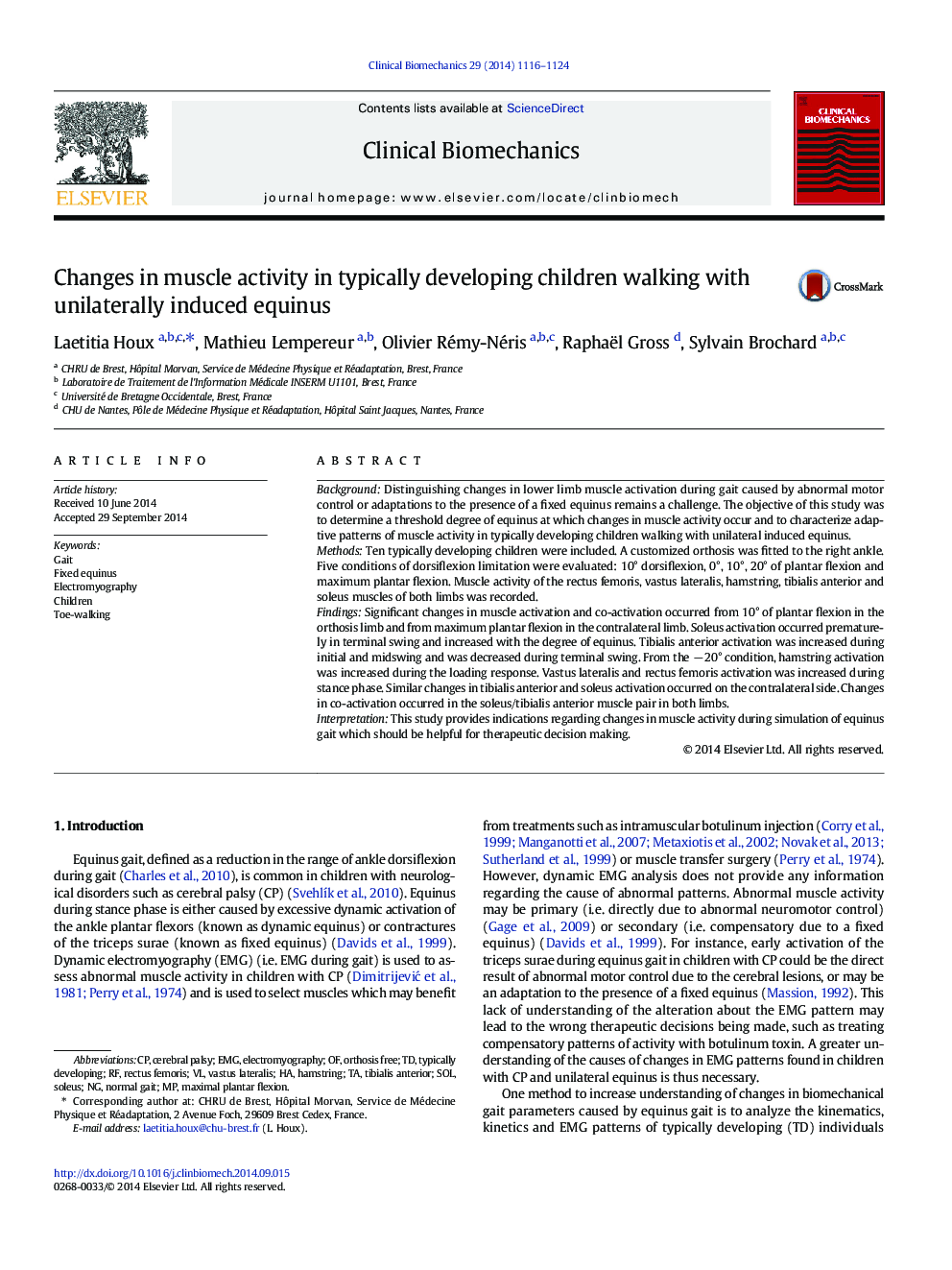| کد مقاله | کد نشریه | سال انتشار | مقاله انگلیسی | نسخه تمام متن |
|---|---|---|---|---|
| 6204762 | 1264917 | 2014 | 9 صفحه PDF | دانلود رایگان |
- First study to mimic different adjustable degrees of equinus to evaluate muscle activation patterns in TD children.
- 10° of plantar flexion induces significant EMG and co-activation changes in the limb ipsilateral to the orthosis.
- The maximal plantar flexion orthosis position induced changes in the contralateral limb.
- Provide some indicators to differentiate EMG activity related to primary or secondary deviations.
- It should help the clinician to provide appropriate, well-adapted treatments.
BackgroundDistinguishing changes in lower limb muscle activation during gait caused by abnormal motor control or adaptations to the presence of a fixed equinus remains a challenge. The objective of this study was to determine a threshold degree of equinus at which changes in muscle activity occur and to characterize adaptive patterns of muscle activity in typically developing children walking with unilateral induced equinus.MethodsTen typically developing children were included. A customized orthosis was fitted to the right ankle. Five conditions of dorsiflexion limitation were evaluated: 10° dorsiflexion, 0°, 10°, 20° of plantar flexion and maximum plantar flexion. Muscle activity of the rectus femoris, vastus lateralis, hamstring, tibialis anterior and soleus muscles of both limbs was recorded.FindingsSignificant changes in muscle activation and co-activation occurred from 10° of plantar flexion in the orthosis limb and from maximum plantar flexion in the contralateral limb. Soleus activation occurred prematurely in terminal swing and increased with the degree of equinus. Tibialis anterior activation was increased during initial and midswing and was decreased during terminal swing. From the â 20° condition, hamstring activation was increased during the loading response. Vastus lateralis and rectus femoris activation was increased during stance phase. Similar changes in tibialis anterior and soleus activation occurred on the contralateral side. Changes in co-activation occurred in the soleus/tibialis anterior muscle pair in both limbs.InterpretationThis study provides indications regarding changes in muscle activity during simulation of equinus gait which should be helpful for therapeutic decision making.
Journal: Clinical Biomechanics - Volume 29, Issue 10, December 2014, Pages 1116-1124
